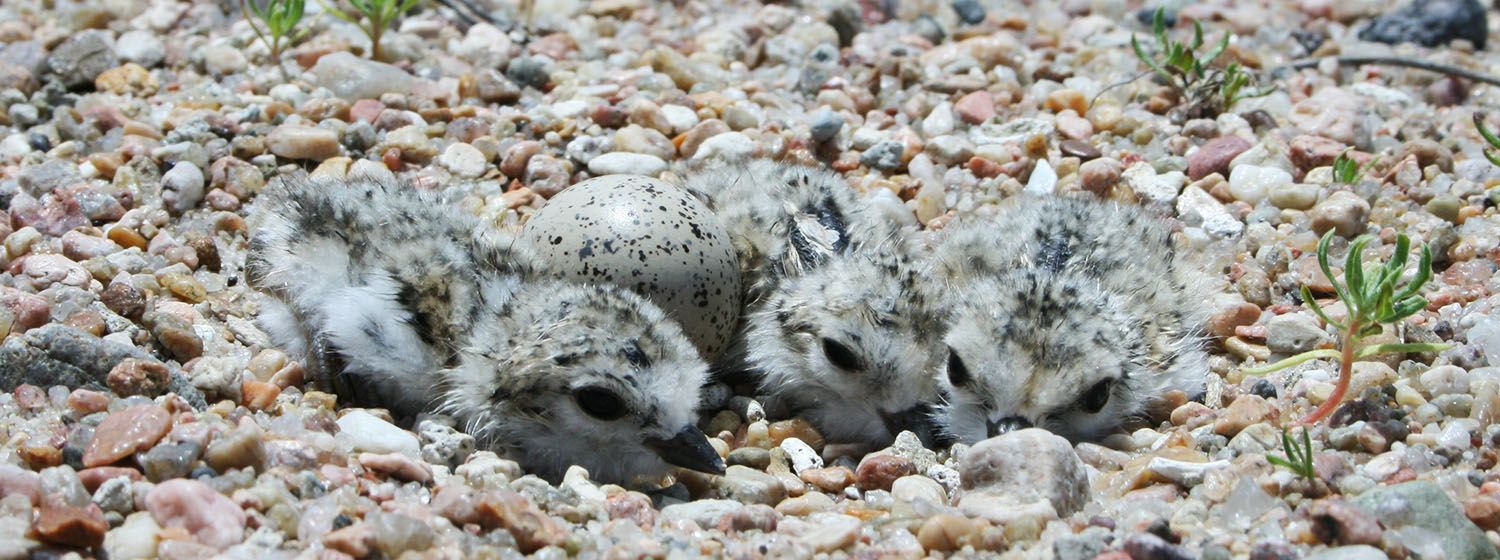The piping plover is a small shorebird (about the size of a sparrow) that winters in the Gulf of Mexico and the Atlantic Coast and migrates to the Great Plains region to nest and raise their young. Piping plovers are characterized by a sandy colored back and white underparts with a single black neck band, a short stout orange bill, and orange legs.

They arrive on their Nebraska breeding grounds in early May, where they scrape nests in sandbars and gravel beaches and line them with small pebbles or rocks. The female lays three to four eggs, which are incubated by both parents. The eggs hatch after about 28 days, and the young leave the nest within hours and start foraging for themselves immediately. During this time, the parents’ role is to protect them from the elements by brooding them. When potential predators are nearby, adult piping plovers will often perform a broken wing display to draw attention to themselves and away from their chicks. It takes about 18 to 28 days for the young to begin flying, depending on food availability. Piping plovers start migrating south in August, and by mid-September most piping plovers have headed south for the winter.

The piping plover was listed as a threatened species in 1986. A major factor in population declines for this bird is the loss of suitable nesting habitat. Piping plovers require sandy, beach-like surfaces mostly free of vegetation for viable nesting. At one time, Platte River floods created piping plover habitat by keeping these areas clear of permanent vegetation. But dams, diversions, and other water management measures have significantly reduced this natural process, causing piping plovers to have to rely increasingly on managed habitat and sand pits for nesting. As part of its overall habitat management plan, the Crane Trust actively contributes to the recovery of interior least terns by clearing vegetation from sandbars and sand pits for nesting on Shoemaker Island. Additionally, the Crane Trust collaborates with the U.S. Geological Survey and the Platte River Recovery Implementation Program, with support from the Central Platte Natural Resources District to band and monitor piping plovers nesting at the Crane Trust.

